808 State: "How many great pieces of music are buried in crap production?"
Graham Massey and Andrew Barker tell us why they decided to unlock the gear vault again
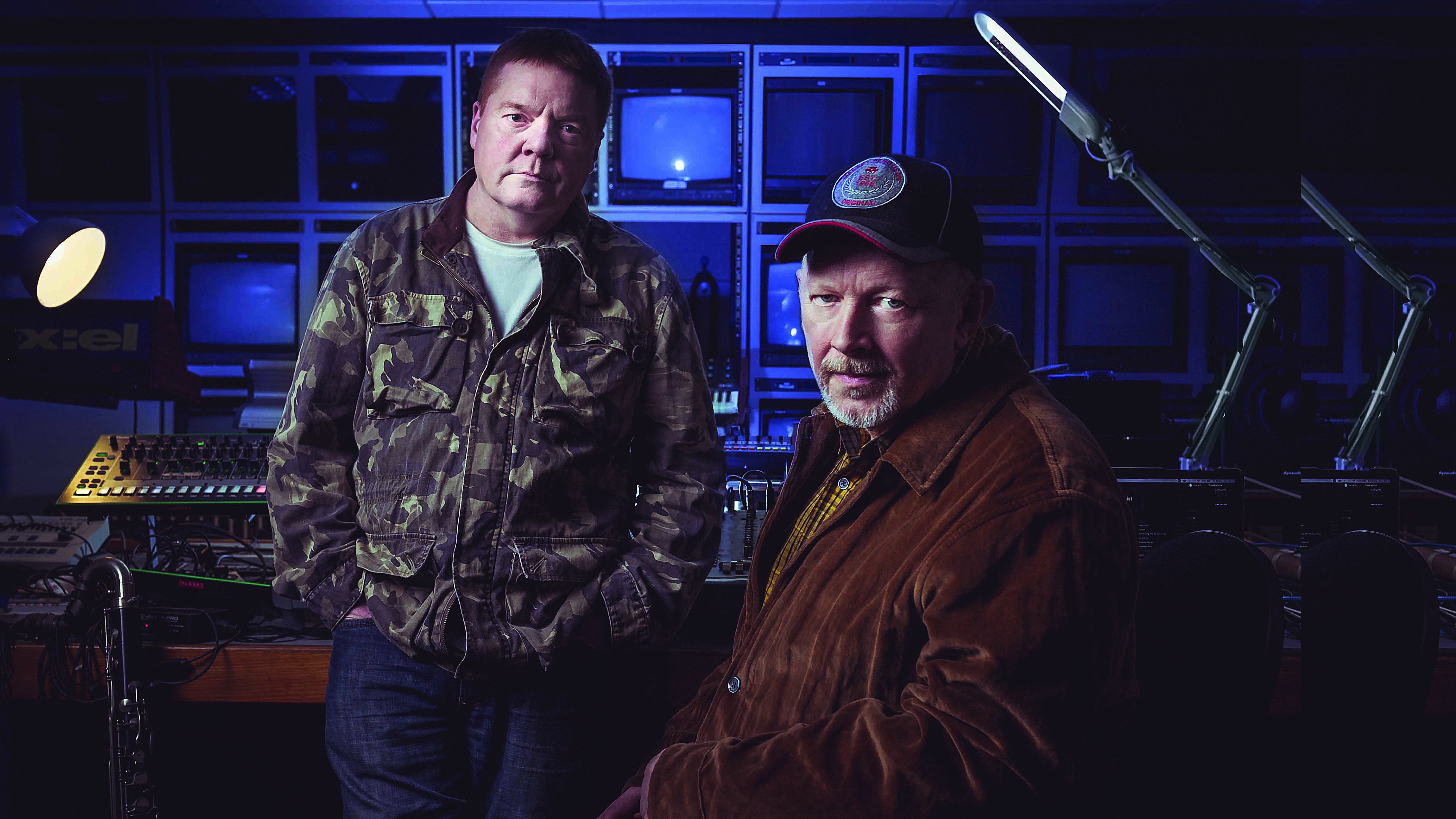
Formed in Manchester in 1987, pioneers of the acid house movement 808 State were named after the famed Roland TR-808 drum machine and stormed the album charts a year later with their Detroit techno and Chicago acid-inspired debut album Newbuild.
Emerging innovators Aphex Twin and Autechre paid tribute while the band continued to raid the charts with top 10 hits including Pacific State, In Yer Face and Cubik.
The initial line-up was Graham Massey, Martin Price and Gerald Simpson of A Guy Called Gerald fame. Andrew Barker joined in 1989, as 808 State further explored variants of IDM and techno, collaborating with Björk and New Order on the album ex:el.
Now just Massey and Barker, their seventh album, Transmission Suite, follows a lengthy recording absence, and while they still surround themselves with era-defining gear, they also embrace the world of hardware recreations and synth plugins...
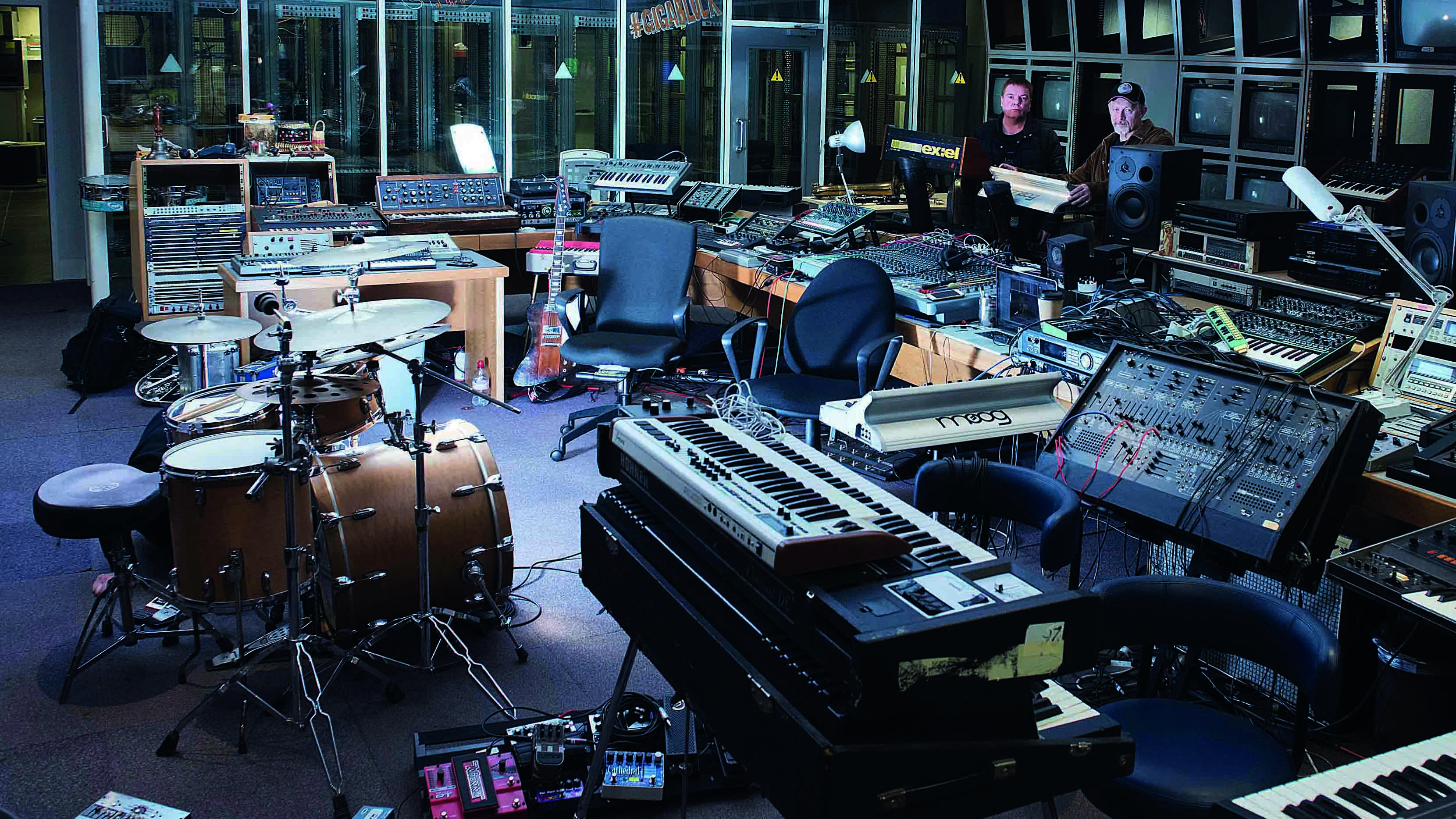
To name your band after it, the 808 must have made quite an impression on you?
AB: “The 808 had been in dance music a while, starting with electro. Then it went through to British soul and slowly evolved through the dance scene. I guess when we started it was already a commonality in lots of genres of music.”
GM: “We met through a record shop during a culture when those shops were so specialised you’d get laughed out of them. There were two in Manchester, one dealt with the black American music imports and then you had Eastern Bloc, which originally had more of an indie/industrial vibe. But Martin Price, who was originally in 808, was an old soul boy at heart. His knowledge of music was insane, but the 808 was always somewhere in that Venn diagram.”
Get the MusicRadar Newsletter
Want all the hottest music and gear news, reviews, deals, features and more, direct to your inbox? Sign up here.
When did you first come across it?
AB: “When I joined, I’d come from a hip-hop/electro background. We all had our little individual setups and joined them together. Gerald Simpson had a little rap group called MC Tune and he’d bought an 808. I had a Casio RZ-1 drum machine, which was like the first sampling drum machine, a little Casio CZ-1 eight-track sequencer and the Sequential Circuits DrumTraks, which you could take the chips out of to re-burn new sounds.”
GM: “At that point, we were in the middle of a musical technology revolution. When we formed, I was doing one of the first music technology courses in England, learning studio craft when the samplers and MIDI technology came in. I remember the first Atari computer arriving and everyone gathering around it like those apes at the beginning of 2001.”
Was it a conscious decision to make the 808 the centrepiece of your sound?
GM: “It was the engine of a system. The first album, Newbuild, was very heavy with the Roland SH-101 synth. We always used their internal sequencers – they were like the notepads from which the music was made. There was no memory, so everything had to be done on-the-fly; then you had to write patterns on the 808 as click tracks and compose all the triggers for the sequencers, so it was your DAW in a way. MIDI was around and we used it, but the first records had that step sequencer tightness, which we’ve turned to heavily again on this new record.”
AB: “Initially, we started with a Roland system, but we found we could take that stuff out live too. In the early days, taking computers on the road was fraught with danger; we’re still scarred from swapping floppy discs from one song to another.”
Did you feel like you were at the cutting-edge?
GM: “Actually, there was something about it being junk shop technology, so you felt like that stuff was going out rather than being at the cutting edge. It was as if it was about to disappear over the horizon. It felt like junk and cost the same as junk.”
AB: “Around that time, FM synthesis had just come in, so everyone was getting rid of analogue stuff and buying D50s. That meant you could pick the Roland stuff up quite cheap, which made it accessible to us.”
"We're still scarred from swapping floppy discs from one song to another."
GM: “You could also get good results super-quick. Back then, studio time was the most expensive part of the system. You’d have two hours or a day in the studio, so you’d have to think of an idea, get it down and mix at an incredible pace.
"When we couldn’t finish things, we started using a system called SMPTE track from Hybrid Arts, which let us stripe a tape with code and layer up MIDI loops. From Quadrastate onwards, we used to put in possibilities on tape and compose on mixing desks that weren’t automated. That’s the advantage of having a crowd in the studio - you could get every man on the desk pressing buttons at specific moments.”
AB: “And if that went wrong, there was always the razorblade. I wish we had a picture of those times when we were putting all these bits of tape together - we were surrounded by the stuff!”
While you no doubt have fond memories, it must’ve been a relief to digitise everything?
GM: “When we entered the digital era there was suspicion, because every time something new comes along it takes a while to trust it. When DAT came in, we still continued with tape for a while and even now people are only just re-digitising their DATs.
"In recent years, we’ve done a lot of tape baking and it’s fascinating when we get the stems back as it all sounds very linear. We’d have 24 ideas running parallel, then carve them out like a sculpture on a desk, which made some interesting gnarly clashes.”
Studio time was clearly at a premium. Was that a source of frustration?
AB: “When we started, we didn’t have any budget for a studio, but Graham worked as a caretaker for an engineer and had a set of keys, so we’d often go into his studio at night. Even when you weren’t paying for a studio, it was still incredibly valuable to get that time.”
GM: “There was an explosion of people wanting to make music when those machines appeared; like the guitar revolution of the ’60s. Suddenly, anyone could have a go, so digital gear opened a horizon and everyone was running in acid. In the record shop, it was all coming back at you and Andrew and Darren Partington had a radio show that exposed stuff.”
AB: “It was called Sunset 102. We’d get all the imports from Eastern Bloc on the Saturday and play them on the Sunday. Tapes were changing hands; you can find all that stuff archived on 808state.com.”
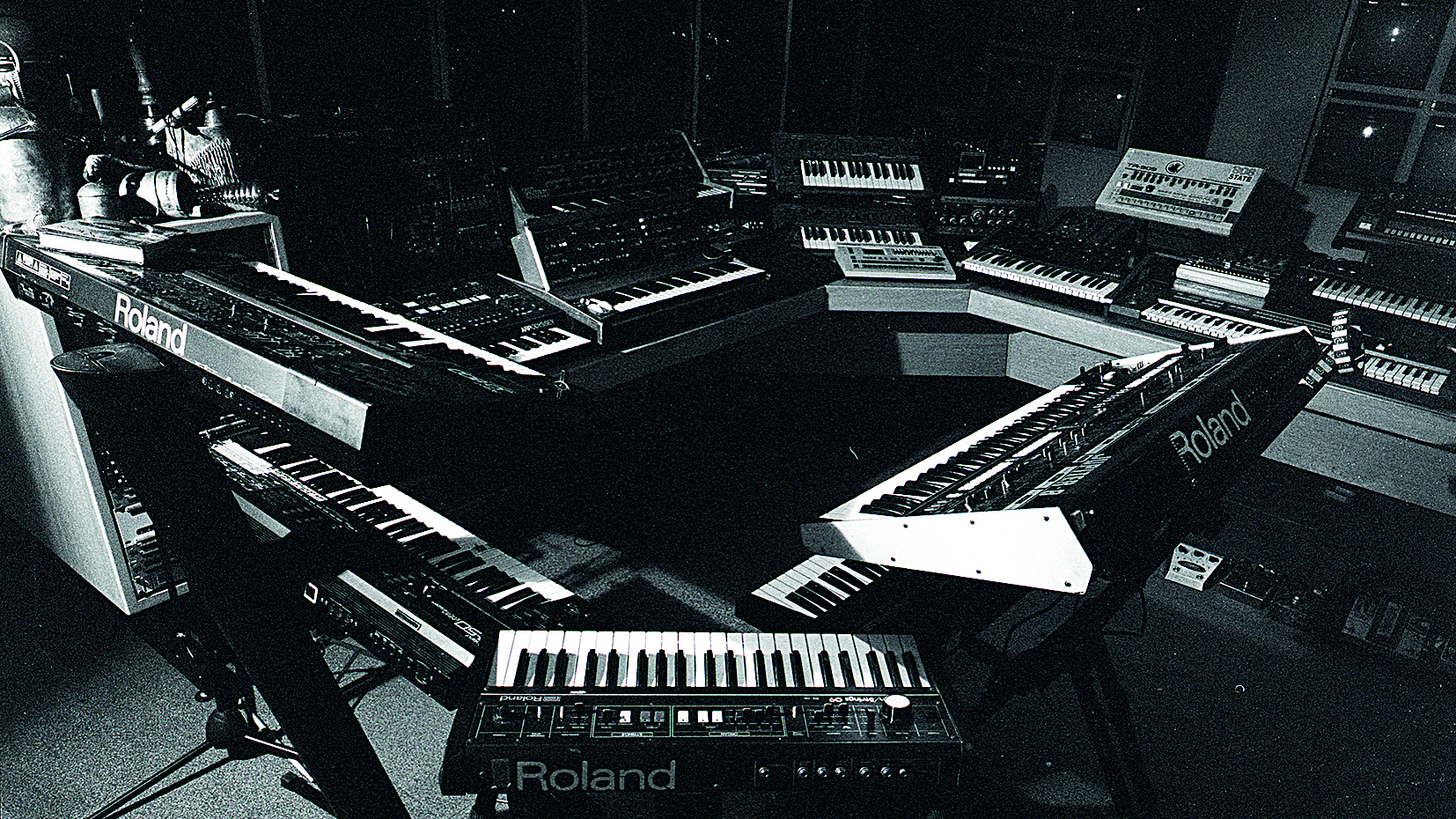
As influential as your early albums were, do you ever look back and think your vision was restricted by the time constraints you were operating under?
AB: “I don’t think you should look back and think you ever did something wrong. That’s just the way things were at the time and we still operate the same principles today. OK, now you can press pause, but we still go with whatever we’re feeling first.”
GM: “I don’t think we had a clear idea of what the audience wanted either. Clubs were able to accommodate all kinds of strange ideas, and music has always been about imagination and generating strange feelings. One of the things I loved about acid house was its alienation and the ambiguity of not knowing how to feel when you heard something. We’re still trying to do that today. When we make something wonky, it’s almost like scoring a goal.”
AB: “We also feel there’s a need to balance outboard with plugins. There’s making music and finishing music, and that’s changed a lot over the years.”
GM: “We were incredibly lucky in those early days to suddenly get funded by a company like ZTT and go into some fine establishments where you could work with great engineers. Looking back, that seems like such a luxury. You have to forget the idea that you’re ever going to sound like you once did.”
Some artists drop their level yet you rarely consider that that might be down to them no longer having budget…
GM: “Conversely, you have to ask yourself how many great pieces of music are buried in crap production. In some cases, there’s a beautiful statue in that marble somewhere. We did an album called State to State 2, which was a freebie with a DVD, and there are some nuggets on there that were really good but we weren’t in a good place studio-wise.”
Did you ever feel the need to disassociate from the 808?
GM: “The drum machine we used most on this new record is the Roland AIRA Series TR-8, which is a fabulous machine. There was a big kick-off against its aesthetic appearance and whether it sounded the same, but it’s a brilliant tool in terms of its flexibility, the ability to tune things on the fly and memory capacity. It’s been a mainstay of this record, although we used some of the old ones alongside it if we needed a slightly more crisp or biscuity sound. You can always sample the Roland TR-606, but there’s something that comes out of that box that has a presence in a mix.”
AB: “That also applies to the real hats or the swing you can get from a 909. Throughout the timeline of our music, I guess everything has its mythical place.”
GM: “Drum machine-wise, one of the things we also dragged out of the cupboard for this album is the Roland R-8, which has a very signature 808 sound. It triggers or finishes in an odd way that makes space in the mix, and some of the ethnic soundcards with their North African-sounding percussion runs through our records like a plague.”
Did you form a relationship with Roland?
GM: “Yes, particularly over the AIRA stuff. When that was under development we got some early prototypes and suggested some things that went into the boutique series. They had us come into their London HQ to discuss how we were feeling about stuff and we did a tour about 10 years ago addressing some of Roland’s history. At that point, Mr Kakehashi was still in command and saying we don’t look back, only forward; meanwhile Korg cleaned up. The regime change in recent years has led to some really useful stuff; so I for one approve of them looking back, as the prices got ridiculous.”
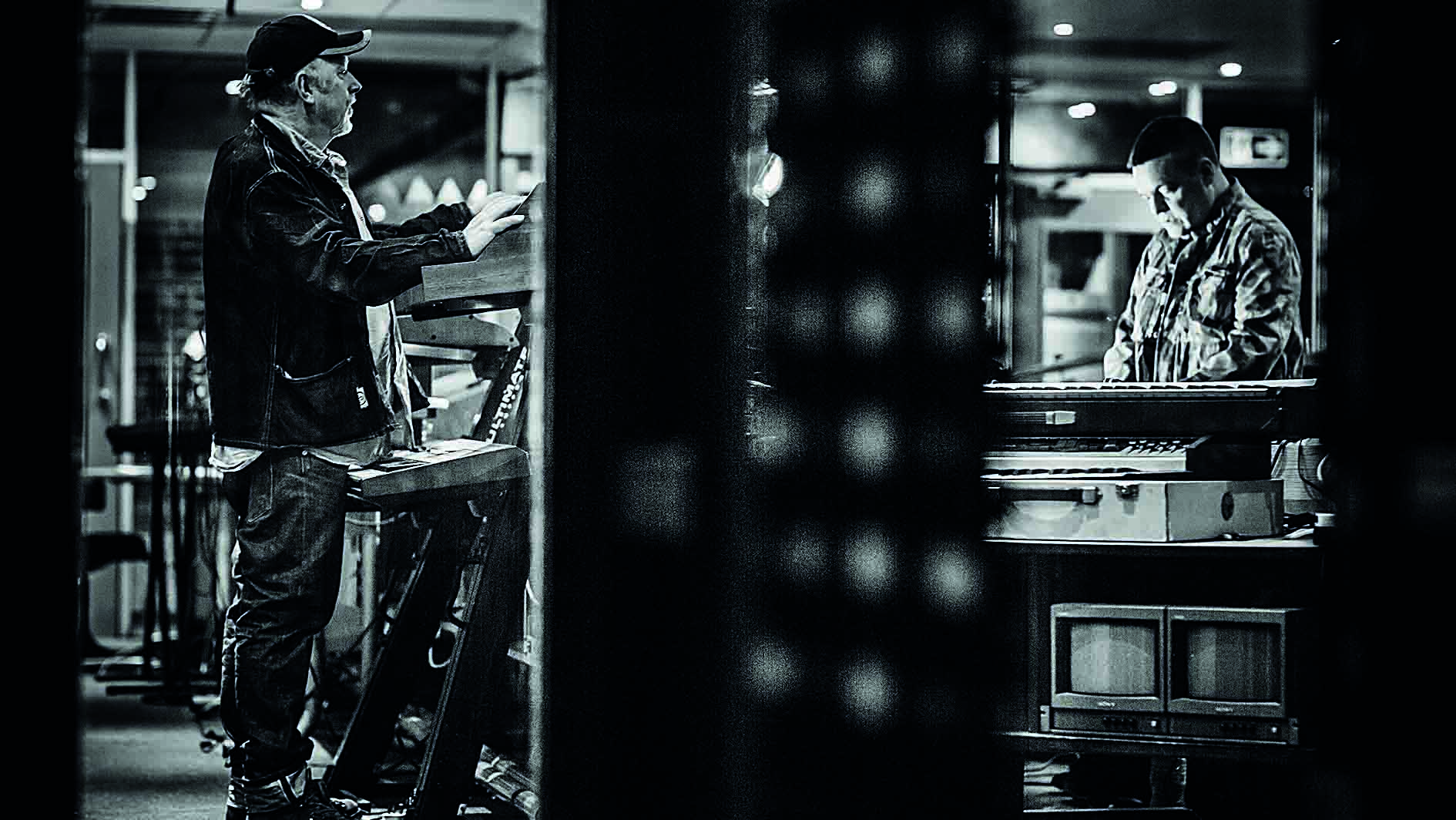
Why the 17-year-wait for a new album?
GM: “It was the right time to do it again. It’s been difficult because we didn’t have a location to make stuff in. We had a long-running studio in Manchester up until the last album because ZTT lent us money to do things, but we racked up a fair amount of debt making videos.”
AB: “If there’s one thing we would go back and change, it’d be not spending as much on a video, or spending more on it and getting it right [laughs].”
GM: “Also, within a few weeks of releasing Output Transmission in 2002, Circus Records went under. We lost the studio, which left us in the desert because we didn’t have a gathering place that we could use as a laboratory. We all separated off in different directions, but I don’t think we fitted into the current version of clubland at the time.”
AB: “We never stopped doing gigs throughout that time, so we didn’t just sit there twiddling our thumbs. I DJed around the world with Darren and Graham was busy doing remixes. We were always waiting for someone to give us a load of money to make a new album, but it took years to realise it wasn’t going to happen.”
"We were always waiting for someone to give us a load of money to make a new album, but it took years to realise it wasn’t going to happen.”
The new album, Transmission Suite, was recorded at the old Granada TV studios building in Manchester?
GM: “That beautiful room with its beautiful furniture was like a fantasy mansion. It triggered the new album because there was a place to turn up to work. We rented the Transmission Suite, which had 80 TVs on the wall. It was the hub of the building and if you look at the wiring under the floor tiles it goes back to the ’50s, ’60s and ’70s etc. The amount of copper under our feet was insane.”
You’d also had a history of performing there...
GM: “When we first started 808 State, we got invited onto Tony Wilson’s show called The Other Side of Midnight. I think he’d seen us playing above a pub in Bolton and declared us as the new Sex Pistols.
"The reason we performed Pacific State on his show was because it had saxophone so wasn’t just pure knob twiddling. We saw a clip of it recently and the track didn’t even have a title at that point.
"The Sex Pistols’ first TV appearance was also in that same studio, along with Joy Division, early footage of The Beatles and even Jerry Lee Lewis, so it was like this special room with a special history.”
What did you find in those studios?
AB: “It was like an abandoned pirate ship. We were wandering around some of the unused studios and there were master tapes of Coronation Street lying around. It’s like what they did with 10CC’s Strawberry Studios in Stockport when they skipped everything. That’s how Granada Studios felt, like people had just walked away.”
GM: “There was EMT plate reverbs, TAC Scorpion desks and we had some guy come down from Leeds to fix some of the Calrec desks. There were patch bays upon patch bays and there was so much wiring that people were coming in with a pair of pliers in their back pocket.
"Our ‘studio’ was like a football field-sized room in a glass box, which we thought would be terrible for mixing. Fortunately it wasn’t too bad, but we got the track mixed in Courthouse Studios just down the corridor, then took it to Peter Beckmann for mastering. He suggested a couple of things and did some voodoo on it.”
"The drum machine we used most on this new record is the Roland AIRA Series TR-8, which is a fabulous machine."
What was the plan once settled in at Granada?
AB: “At first we thought, let’s go in, do something and if we don’t like it we’ll park it and no one need know any different. But in the end we had four hours of music across 40 tracks, which is when we knew we needed to stop.”
GM: “When you look at the equipment we had in the studio, we felt obliged to use most of it, but the core was a tabletop setup, and it’s interesting how those things connect to a DAW now.”
What gear was central to your process?
GM: “One of the best things we bought was a Sync-Gen Pro, which is a little synchronisation box that sends a timecode from your DAW but the clock is bang on. That meant all the drum machines we used were bang on. It enabled us to reintroduce CV/gate, which was beautiful because it allowed us to bring the ARP 2600 into full use again and other Roland kit.
"Another big return came through using the u-he Repro-1 plugin because I loved the step sequencer on the Sequential Circuits Pro One. We got the real one out and it’s as tight as anything, so that provided a big voice on the album.”
Are you still big into sampling?
GM: “There’s something about the architecture of the Akai samplers that’s still embedded into us. We’ve still got all the old floppy disks and it was interesting to have that flavour back.
"We use Logic’s ESX24 sampler all the time, but prefer hardware sampling. It’s to do with the sonics and what pokes out.
"Doing a mix is like developing photographs: you sometimes need things to be sharper, to the fore or blurrier, and those are the choices you make between soft synths and hardware.”
The studio looks like hardware heaven, and you seem happy to mix up vintage gear with modern hardware recreations and software?
GM: “It was a mixture of all these things. We used the Boutique Juno as a writing tool and at the last minute compared it to the real one. The original’s been repaired about three times now so it’s probably worth about £20,000.
"I also got the Arturia BeatStep Pro, which plays a huge part on the record due to its tight CV/gate sequencing. You know those drawings by Escher where you can’t tell whether you’re going up the stairs or down? It gave rise to these weird earworms - patterns that move around and give a tweaky aspect to the record that might be nostalgic to some people.”
Were you conscious of returning to sounds you’re best known for?
GM: “We are conscious of our back catalogue and asked ourselves what lies behind an 808 State record. While a lot of that is second nature, it’s also at the forefront of your brain. There’s a danger in doing that, but on occasion we hit on something that’s always worked so we just left it.”
AB: “We really noticed that doing gigs. We did the 808 celebration tour last year and half the set was stuff from this new record, which must have been really confusing if you bought a ticket. In putting those tracks next to each other, we got a sense of whether there’s the same flow and balance.
"Our live set’s quite tough and kicking. We did the Blue Dot festival recently and played right after Kraftwerk, so a lot of the people who went to our set may have been a little gobsmacked. I guess with Kraftwerk you don’t feel like anything’s going to go wrong, whereas we have this tension where you feel something could go wrong at any point.”
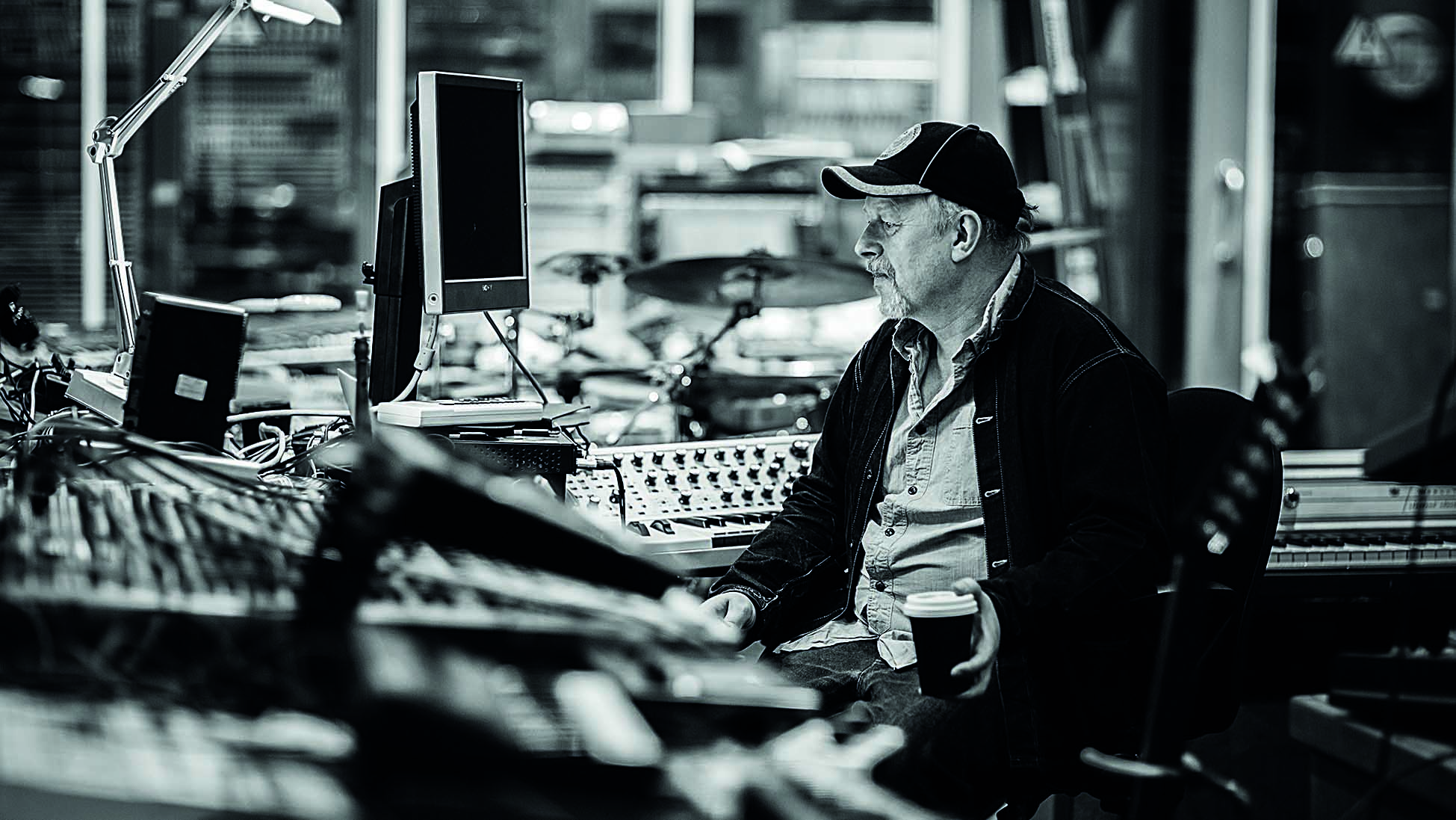
We may have waited 17 years for an 808 State record, but Kraftwerk aren’t much quicker…
GM: “That’s why we don’t feel bad about it, because people like Kraftwerk and Derrick May haven’t made a record since forever. It doesn’t feel like 17 years because we’ve put a lot of work into remastering our back catalogue. The staff turnover at labels is incredible and threads get lost all the time. If you hand your stuff over for them to curate, you know they’re going to get it wrong.”
"We have this tension where you feel something could go wrong at any point.”
We were surprised to see a lot of acoustic gear in the studio too. Did you bring some session players in?
GM: “We have a live drummer on stage and there were some tracks that featured live drums that didn’t go on the album. We used some live percussion, tried vocal stuff and sampled other instruments. Weirdly, there’s an awful lot of vibraphone on the record because the studio ended up being a depository for other people’s instruments. There’s always been a lot of wind instruments on our records too and our studios have always been a nice place to drop in and have a jam.”
Did software play a big role in the process?
GM: “After the process, it’s hard to tell the difference between a softsynth and a live synth but we used quite a few. There’s a lot of nice stuff in the Arturia package like the CMI Fairlight and Buchla libraries. We can’t afford the original gear so they’re useful.”
Are you more interested in using software emulations than going deep into sound design?
GM: “It depends what’s needed at the time, but we like software effects that are a bit dangerous so we use Waves stuff like the Smack Attack transient shaper and Absynth for a lot of the weird, atmospheric stuff. We also like AudioThing plugins like Filterjam and Springs and Eventide’s Blackhole reverb and H3000 Harmonizer plugin.
"I haven’t invested too much in Universal Audio plugins because it’s too easy to rack up thousands of pounds worth of stuff, but we do like the Apollo 8 audio interface. We used to use the Minimoog a lot, but Moog gave us the Moog Subsequent 37 and that’s all over the record, so the Minimoog’s feeling a bit lonely in the corner now.”


Future Music is the number one magazine for today's producers. Packed with technique and technology we'll help you make great new music. All-access artist interviews, in-depth gear reviews, essential production tutorials and much more. Every marvellous monthly edition features reliable reviews of the latest and greatest hardware and software technology and techniques, unparalleled advice, in-depth interviews, sensational free samples and so much more to improve the experience and outcome of your music-making.
"I said, “What’s that?” and they said, “It’s what Quincy Jones and Bruce Swedien use on all the Michael Jackson records": Steve Levine reminisces on 50 years in the industry and where it’s heading next
“I’m looking forward to breaking it in on stage”: Mustard will be headlining at Coachella tonight with a very exclusive Native Instruments Maschine MK3, and there’s custom yellow Kontrol S49 MIDI keyboard, too










